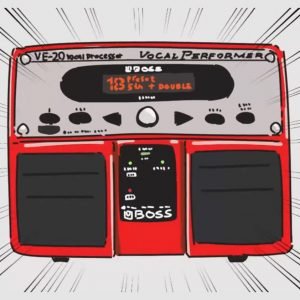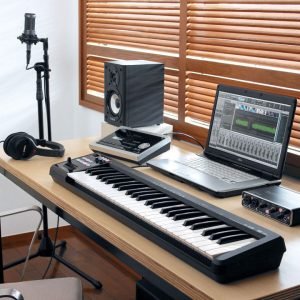4 Tips for the Final Mix Down
1. Getting the Best Out of Autotune…
The pizza is all eaten, the tracks are all recorded, and everyone is satisfied that their parts are both in tune and in time. If not, it is usually quicker to record them again than trying to use editing to patch them up in post production. Having said that, slight imperfections in vocal pitching can be polished out using an automatic pitch correction program such as Autotune. Autotune, and its many imitators, has a correction speed slider that determines how quickly off-key notes are corrected. There’s usually also a little keyboard display where you can select the specific notes that are in the vocal part you’re working on if it strays outside one of the standard scales and keys that are on offer. The main problem I hear is that the correction speed has been set too fast and so the pitching sounds unnaturally rigid. We’re all familiar with the very obviously Autotuned sound used as an effect but once your ears know what to listen for, you start hearing it even when the settings are more subtle. The trick here is to use the slowest correction speed that still gets the job done as that will leave the natural slurs and inflections, that every singer produces, intact.
Author: Paul White Editor-In-Chief for Sound on Sound and Roland UK Features Team
2. Post Production: Compression…
Vocals also benefit from a little compression to even out the levels and to add some density to the sound. Less experienced recordists often pick a suitably named preset plugin compressor, and this is OK but with one important reservation. You still need to adjust the compressor’s Threshold control manually as the preset designer can’t know how loud your vocal was recorded or what its natural dynamics are like. Simply adjust the Threshold with the vocal playing and watch the compressor gain reduction meter as you do so. A typical setup will have this meter showing little or no activity on the quieter parts, maybe 3 or 4dB of gain reduction on average level sections and perhaps momentary peaks of 10dB or more on louder sections. Set this way your vocal will sound much more even and it should sit comfortably in the mix. If the vocal starts to sound squashed and unnatural, then you’ve probably applied too much compression.
3. Post Production: Use the EQ (Sparingly)…
If you’ve recorded your separate parts well, you should be able to achieve a balance without using much in the way of EQ other than cutting unnecessary lows from non bass parts as described earlier. Start by balancing your rhythm section so the bass and drums sound right together, then you can add the vocals. Once these feel well-balanced against the rhythm section, you can bring up the supporting instruments and your ears should tell you when they’re loud enough without fighting the vocals. You can now think about using panning to create a stereo perspective where vocals and bass sounds tend to be mixed centrally and other instruments balanced between left and right. For example, if a section has one guitar and one keyboard part, you might put the guitar to the right and the keyboard to the left. Where panning is concerned, if it sounds right it is right.
4. Post Production: Reverb and Delay…
Vocals usually need a little delay and/or reverb to make them sound ‘produced’ and to help them sit in the mix, but a common problem is simply to add too much effect. Modern reverbs have lots of presets so try shorter Plate and Ambience settings first and judge the level with all the mix playing. Once you have what you feel is the right level of reverb, try switching it off to see how much difference it makes. If it is a really obvious difference, you may still have too much as many modern recordings have a lot less in the way of “in your face” reverb than records made at the end of the last century. Mixing is an art so all that matters is the end result, but if you follow the previous tips you’ll find the whole process goes a lot more smoothly.

Related Article
10 More Ways Guaranteed To Quickly Improve Your Music Production








